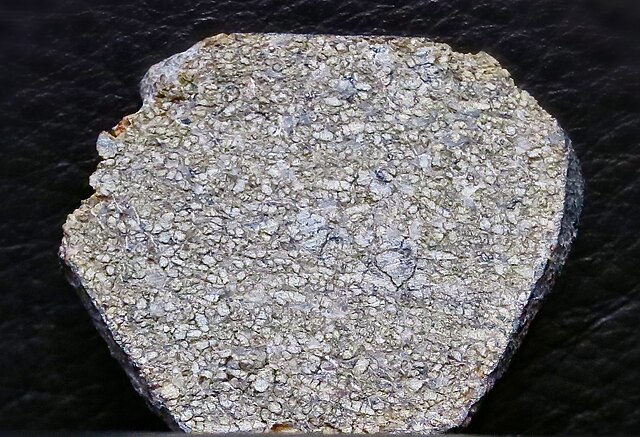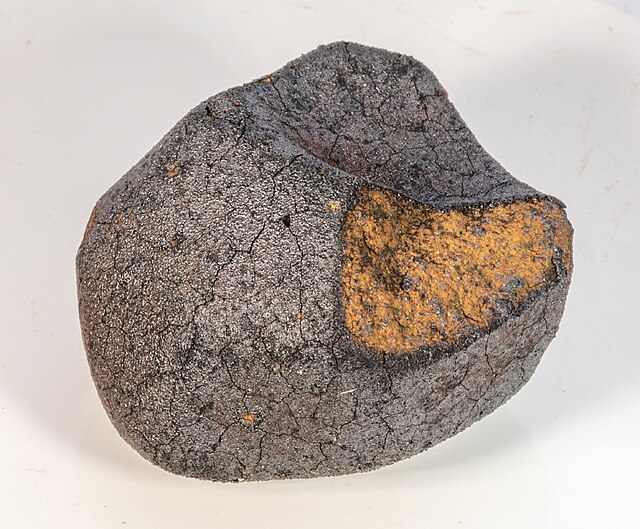A Martian meteorite is a rock that formed on Mars, was ejected from the planet by an impact event, and traversed interplanetary space before landing on Earth as a meteorite. As of September 2020, 277 meteorites had been classified as Martian, less than half a percent of the 72,000 meteorites that have been classified. The largest complete, uncut Martian meteorite, Taoudenni 002, was recovered in Mali in early 2021. It weighs 14.5 kilograms and is on display at the Maine Mineral and Gem Museum.
Martian meteorite EETA79001, shergottite
Martian meteorite NWA 7034, nicknamed "Black Beauty," weighs approximately 320 g (11 oz).
NWA 6963, a shergottite found in Morocco, September 2011.
Nakhla meteorite's two sides and its inner surfaces after breaking it
A meteorite is a rock that originated in outer space and has fallen to the surface of a planet or moon. When the original object enters the atmosphere, various factors such as friction, pressure, and chemical interactions with the atmospheric gases cause it to heat up and radiate energy. It then becomes a meteor and forms a fireball, also known as a shooting star; astronomers call the brightest examples "bolides". Once it settles on the larger body's surface, the meteor becomes a meteorite. Meteorites vary greatly in size. For geologists, a bolide is a meteorite large enough to create an impact crater.
The 60-tonne, 2.7 m-long (8.9 ft) Hoba meteorite in Namibia is the largest known intact meteorite.
NWA 859 iron meteorite showing effects of atmospheric ablation
The impact pit made by a 61.9-gram Novato meteorite when it hit the roof of a house on 17 October 2012.
Meteorite fallen near Flensburg in 2019.








